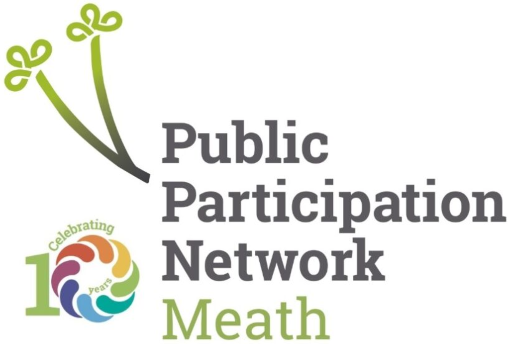All-Ireland Pollinator Plan: April 2025 newsletter
Comments : 0
| View this email in your browser |
 Newsletter: April 2025 The All-Ireland Pollinator Plan is a framework bringing together different sectors across the island of Ireland to create a landscape where pollinators can survive and thrive. Its implementation is coordinated by the National Biodiversity Data Centre. |
To spot this month: keep an eye out for the Tawny Mining Bee This is one of our most distinctive solitary bees – look out for deep red hairs on the thorax and orange hairs on the abdomen. It usually comes out of hibernation in April and will be around until June. It nests by making little volcano-like burrows into bare soil and can be found in gardens. The Tawny Mining bee (Andrena fulva) was thought to be extinct for 87 years in Ireland, before being rediscovered in 2012. It is now known from counties Down, Dublin, Wicklow, Kilkenny, Tipperary, Kildare, Carlow & Waterford. Can you help find more new populations?  Submit your solitary bee sightings To do this month: Check out wild bees favourite food in 2024 Every year, the National Biodiversity Data Centre receives thousands of bee sightings. In 2024, 1,707 records were submitted that also included information on what flower the bee was feeding on. A huge thank you to everyone who sent in foraging data as it allows us to get as sense of what flowers they prefer. This year’s data again shows the importance of native plants and of simple actions like reduced mowing! Click the link to read more, including which plants are key each month, and what actions you can take to ensure your site provides their favourite foods.  Read more New resource: Pollinator-friendly management of healthcare sites The All-Ireland Pollinator Plan is delighted to release a new free resource: Pollinator-friendly management of healthcare sites, developed with the support of the HSE. Biodiversity and human health are closely linked. A growing body of research reveals that natural environments have a huge impact on human health and wellbeing. Pollinators are at the heart of healthy environments, and wild bees are responsible for pollinating many of the fruit and vegetables that support a nutritious diet. Taking steps to improve biodiversity on healthcare sites can contribute to patient and staff wellbeing, and in some cases may even aid patient recovery. From mowing less in certain areas, to creating a biodiversity garden or walking trail, or planting or protecting native trees and hedgerows, there are many ways healthcare sites can help pollinators and people. The new guide includes a list of detailed actions to suit all types of healthcare site no matter the size or space available, and stories from healthcare sites that have already transformed their spaces for biodiversity.  Find out more and download the guide New illustrated guide to hoverflies which resemble bumblebees in Ireland and adjacent parts of Europe The National Biodiversity Data Centre has published a new illustrated guide to hoverflies which resemble bumblebees in Ireland and adjacent parts of Europe. This is a technical document, but we hope it might be of interest to some of you. Recorders of pollinators like bumblebees, solitary bees and hoverflies will know that some hoverflies look like wasps, bumble bees, honey bees or solitary bees. In Ireland there are 10 hoverfly species which look like bumblebees, scattered among a number of different hoverfly genera. There are 5 more in adjacent parts of Europe’s Atlantic zone. These 15 Atlantic zone bumblebee-like hoverflies are keyed out together here for the first time. The features used in the keys are illustrated in colour, using focus-stacked photographic images produced by the author. Short notes are also provided, on each of the species included in the keys. We are very grateful to Dr Martin Speight, who has produced this illustrated key for National Biodiversity Data Centre. It is full of beautiful images of hoverflies, and we hope it will encourage some of you to learn more about these insects and consider submitting records to the National Biodiversity Data Centre. The image below shows the hoverfly Volucella bombylans, which can resemble a Red-tailed Bumblebee.  Download the pdf guide Submit hoverfly records New resource: Making a pollinator-friendly rainwater planter The All-Ireland Pollinator Plan is delighted to release a new free resource: Making a pollinator-friendly rainwater planter. Rainwater planters are mini rain gardens that slow down the flow of rainwater from rooftops. By diverting rain through the planter, they reduce overflow into storm drains and can help prevent flooding. By building your own timber rainwater planter and adding water-resistant pollinator-friendly plants, you can manage rainwater runoff and help feed wild bees at the same time. This can be a great option if you have limited space, or want to make use of hard surfaces near buildings. The new booklet gives step by step instructions on making a pollinator-friendly rainwater planter, including the materials needed and ideas for pollinator-friendly native and non-native plants. We would like to thank Paula Kearney of Galway City Council for supporting the creation of this resource. Thanks also to Noeleen Smyth, UCD and Alex Konieczka of Understory for helping in its development.  Find out more and download the booklet Reduced mowing tips: April – Let Dandelions Bee This month will see the biggest bloom of Dandelions. These native wildflowers are vital sources of nectar and pollen. Records sent to the National Biodiversity Data Centre in 2024 showed that Dandelions were the most popular food source for wild bees. Help feed hungry pollinators this month and #LetDandelionsBee. Reducing mowing even to once a month can help feed our hungry pollinators. By mowing less, you are giving native wildflowers a chance to pop up naturally. Over time this will result in pockets of species-rich grassland: a vital habitat providing food and shelter for pollinators. If you’re taking part in No Mow May this year and you’re worried about grass growth, cut your lawn before the end of April. This will ensure the height is manageable when it’s time to mow again. Make sure you remove grass clippings to help wildflowers grow. You can also read a fascinating blog below, summarising a recent scientific study that shows how ‘wiggly’ mowing can help pollinators!  Create a short-flowering meadow flyer New blog: how ‘wiggly’ mowing can help pollinators It’s time for Flower-Insect Timed Counts (FIT Counts) again! This scheme runs from April to September. FIT Counts are an important way that you can help us monitor pollinators. Download the free FIT Count App, watch a 50x50cm patch of flowers for 10 minutes and count how many insects visit. You can carry out a FIT Count anywhere, and on any flower, but where you can, please use one of our 15 target flowers. In April, its especially useful to carry out FIT Counts on Dandelion. You do need to wait until it’s sunny and at least 13C though! In 2024, 784 validated FIT Counts were submitted by 135 different volunteers. The average number of insects per FIT Count was 7 (down from 9 in 2023). The most common insect group recorded were hoverflies followed by other flies then bumblebees. The most common habitat FIT Counts were carried out in was grassland with wildflowers.  Learn more about FIT Counts UCD study – do you know of any large nest sites of solitary bees A University College Dublin team led by Dr Darren O’Connell are looking to gain a greater understanding of the ecology of the solitary mining bees, the Andrena. They are looking for firsthand information on locations with abundant Andrena, of any species. In particular, locations where large, regular aggregations of Andrena nests are found. Certain Andrena species such as the Ashy Mining Bee (Andrena cineraria), Buff Mining Bee (Andrena nigroaenea) and Sandpit Mining Bee (Andrena barbilabris) form large aggregations of nests, typically is dry, sandy soil. The photograph below is of Andrena barbilabris. If you can recommend any suitable locations please contact Dr O’Connell at darren.oconnell@ucd.ie  Submit your ideas for the next All-Ireland Pollinator Plan 2026-2030 The next version of the AIPP will be developed across 2025. We want the next Plan to be the most ambitious yet. Please submit your ideas/suggestions – however big, small or radical! Submit ideas at any time and as often as you like.  Submit your ideas |

